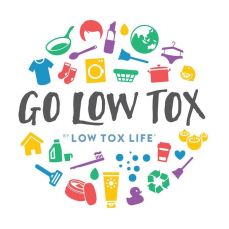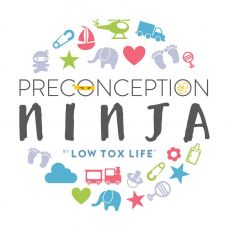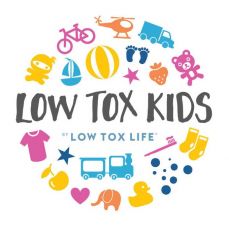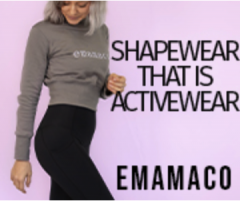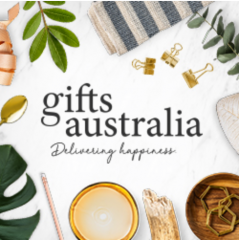Preparing your family spaces for baby Work / Play / Leisure Suitable for stages: Pregnancy, 0 - 3 Months, 3 - 6 Months
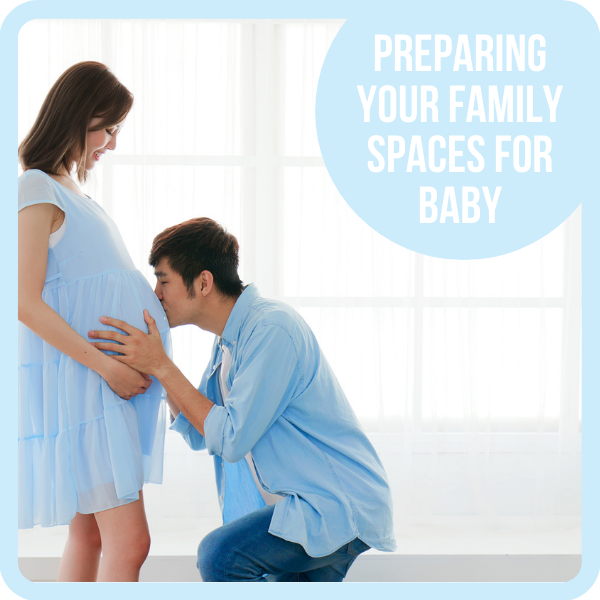

Your living areas will need to serve multiple functions for all members of the family - for play, activities, entertainment, relaxation, comfort, reading, talking, and exercise. As your family grows, the range and type of activities engaged within this space will evolve. The important first step is to look at if it is safe for a small baby, can be easily adapted, and if it supports participation. Become familiar with the Kidsafe Home Safety resources to inform any changes you make. Obvious things to look for and rectify include sharp corners or hard surfaces of tables or coffee tables, cupboard door handles, cords from blinds/curtains, furniture or TVs which could easily tip or be pulled down, uncovered and accessible power points, and loose cords. Of course, most of these things become an issue once your baby is mobile, but it can be helpful to have the long term picture in mind when making any changes to your living spaces.
Things to look at:
Can you relax in the living space?
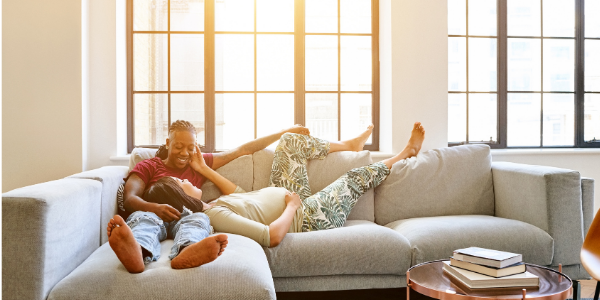
If the living space is cluttered, dark, dusty, or uncomfortable, it is unlikely you will be able to relax with a new baby in that space. In the early days, with a newborn in arms, you don’t want to be looking around your living space feeling the 4 walls closing in and making mental to-do lists as you look around the room. Surfaces that you can clean easily when the inevitable spills and spews occur can also help you to relax knowing that you can deal with whatever happens.
If you can’t change the space, look for other spaces where you can fully relax and spend time there instead. Have a chill-out zone in your house where you are comfortable and can create a relaxing atmosphere to play music, space to lie or sit down, fresh air, soft furnishings etc. You may need a place to practice mindfulness, meditation, deep breathing, and positive mantras such as “this too shall pass”.
Are you set up for feeding and baby care activities?
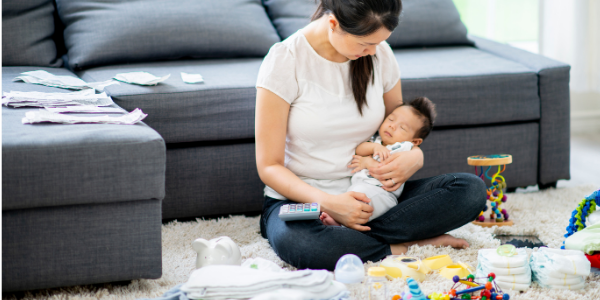
The living area is a convenient place to set up a feeding area where your body and baby can be supported for relaxed breastfeeding or bottle feeding. You will be spending a lot of time feeding in the early days and want to have options for comfortable places to do this, with options both in a common area and in a private area.
Your feeding station set-up could include a comfortable chair that may have extra pillows and footrest, with a nappy caddy or basket with access to water and snacks, tissues and wipes, extra nappies, extra baby clothes, and cloths for soaking up spills. A soft flat area at chair height can be a convenient place to change your baby’s nappy - some lounges have a flat chaise section or an extra-large ottoman would work. Otherwise, you could have an extra change mat stored out in the living area for use on the ground, a low table, kids table or activity table with storage. If you have a low table or coffee table, make sure it is sturdy and will be safe for a mobile baby to pull themselves up into standing and without sharp edges or corners to bump heads on as they fall from standing. You will have a change station set up which can be adapted for different uses as your baby grows.
Is the space open-plan for playing alongside everyday activity?
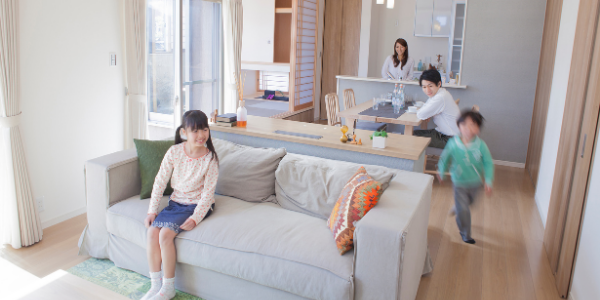
Setting up a safe, open, relaxed play space for babies in the living area and off the kitchen area will mean you will be able to manage some household tasks whilst within eyeshot and earshot from your baby. Consider including only the essentials to keep the floor area uncluttered and easy to maintain - less is more, especially if the space is small. For young children, you may forego the coffee table completely to open up the space for free play and movement.
Assess everything in the area which babies can access at different stages to ensure there is nothing unsafe where they can hurt themselves, choke on, or anything you don’t want them to touch. If the room is too large and open, try to create a warm, safe, and inviting play space with soft furnishings and larger play items.
Also, consider the floor surfaces available in the area. Smooth flooring can be tricky for babies to get a grip on as they learn how to crawl and move around. A great idea is to have a rug, play mat, or carpet option for baby to experience a softer floor surface for play, no nappy time, tummy time, and soft landing pad when learning to sit and move around. Your baby has the most contact with the surfaces around the house as they use more senses to explore, mobilise using their hands and feet and are more vulnerable to inhaling particles as they breathe more rapidly than adults. Consider a no-shoes policy in the house (just as the Japanese do) to prevent unwanted bacteria and chemicals from entering the house and to assist with keeping the floor surfaces clean and tidy with minimal effort. That way, your baby can go anywhere in the space and you can relax.
If there are unsafe surfaces or areas such as stairs or in the kitchen, a baby gate/fence can be used. A gate could be accepted more readily by the child if it was associated with playing with a favourite toy or decorated with bright colourful stickers which could be a talking point.
Well-chosen and quality toys targeting different play skills could be placed in reach of your child each day and rotated. More toys doesn't equal more fun – the right amount of toys can encourage more purposeful play and maintain attention longer. To reduce trip hazards, establish routines and early participation around pack up time, and have a storage solution for small items and toys. They can be organised into drawers accessible to your child and labelled with pictures for fun packing away and spontaneous play. Alternatively, a series of lightweight boxes which they can easily handle and reach into can do the trick.
Do you have an outdoor space with fresh air, sun & shade?
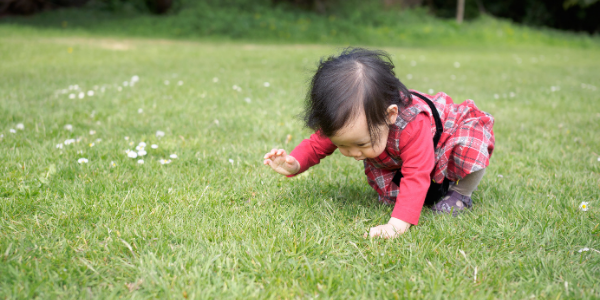
Having an outdoor space where you can relax in both sunny and covered areas is great for your health and wellness. Children love being outside where they can move freely and explore. It’s great to have an outdoor space (either your own backyard or a nearby reserve or park) where the kids can break out with bare feet whilst being safe and supervised. If you need some motivation to get outside more and why you would get your children out in the backyard more, The Earthing Movie: The Remarkable Science of Grounding (full documentary) is an interesting watch, and the Let them Eat Dirt: Saving Your Child from an Oversanitized World book is an interesting read.
If your outdoor space needs some work, try planting some greenery, and start to imagine how your child will play in the space with you or under supervision. When they are getting into toddler age, they will love to swing, slide, jump, climb and play in water/dirt/sand. Think about where you could put play equipment or hang a swing to make it a break out space. Would there be space for a trampoline (eBay or Vuly Trampolines)? A swing (eBay or Vuly Swing sets)? A slide? If you are thinking of a sandpit (check out the Vuly deluxe sandpit) make sure you can cover any sandpit areas to prevent contamination from animals such as cats who can pass on toxoplasmosis. If you are thinking about a pool, make sure you have this set up to prevent accidental drowning. Kidsafe NSW has information and factsheets on how to make sure your backyard is safe, safety on farms and kids and animals and everything you need to know about Water Safety.
Healthy Home Audit
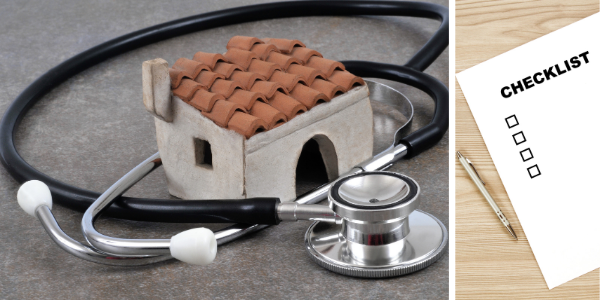
It is worth evaluating how healthy your home is in terms of air quality, design, in-use/maintenance and any renovation considerations and take action to protect the health of everyone living in your home - access the Your Home website for an introduction to this area.
Some things to consider include:
- The location of electronics and limit the use of wi-fi, connecting devices via ethernet where possible.
- Consider fabrics, glues, and fire retardants of couches, cushions, and floor surfaces.
- Consider the air quality and ensure that fresh air is introduced daily. If you park your car in an attached garage or carport, limit the exhaust air entering the house using seals, fan extraction, and self-closing doors. Store any chemicals
- Look at the light quality around the house. Natural light is the best form of light, followed by warmer light colour, then blue light sources. Some CFL type bulbs are very unsafe if they break as they contain mercury.
- Check if your vacuum has a HEPA filter - consider upgrading your vacuum or getting a handheld vacuum to help with quick clean-ups.
- If your flooring allows, consider a steam mop cleaner. Synthetic cleaners can be very dangerous especially when mixed.
- For gardens and lawns, go for non-toxic options to combat weeds and insects.
To find out more on healthy homes, other resources include The Healthy Home: Simple Truths to Protect Your Family from Hidden Household Dangers by Dr Myron Wentz & Dave Wentz with Donna K. Wallace (2011), Healthy Home Healthy Family: Is where you live, affecting your health? by Nicole Bijlsma (2018), or the Low Tox Life resources including the courses Lox Tox Kids & Go Low Tox.
Please note: Above all, any information on this website aims to provide general ideas for informational and educational purposes only. We encourage users to investigate several information sources, including, where necessary, independent individualised medical advice before making any decisions that could affect you or your child’s health or wellbeing. * BabyPeg participates in various affiliate programs and may earn a commission for referring our users through the links provided. This is at no additional cost to our users. We take great care in choosing products and services which align with the mission of promoting better health and wellness for our BabyPeg community. Where possible, products are tried and tested by us. To continue to provide BabyPeg as a free service and reach as many parents as possible, we appreciate your support in using the link provided to purchase if you decide the product is right for you.

